| Filtration indicators of air purifiers.
How to Choose an Air Purifier
CADR vs. CASR
CADR and CASR are essentially the same, with slight variations in units and testing standards. CADR stands for 'Clean Air Delivery Rate' and is the first data you should consider when selecting an air purifier. It represents the amount of clean air the device can deliver for a certain period of time. It is commonly measured in three different units:
(1) CFM (Cubic Feet per Minute):
Used in the United States and referred to as CADR.
(2) CMH (Cubic Meters per Hour):
Used in China, also called CADR.
(3) CMM (Cubic Meters per Minute):
Used in Taiwan under the name CASR (Clean Air Supply Rate).
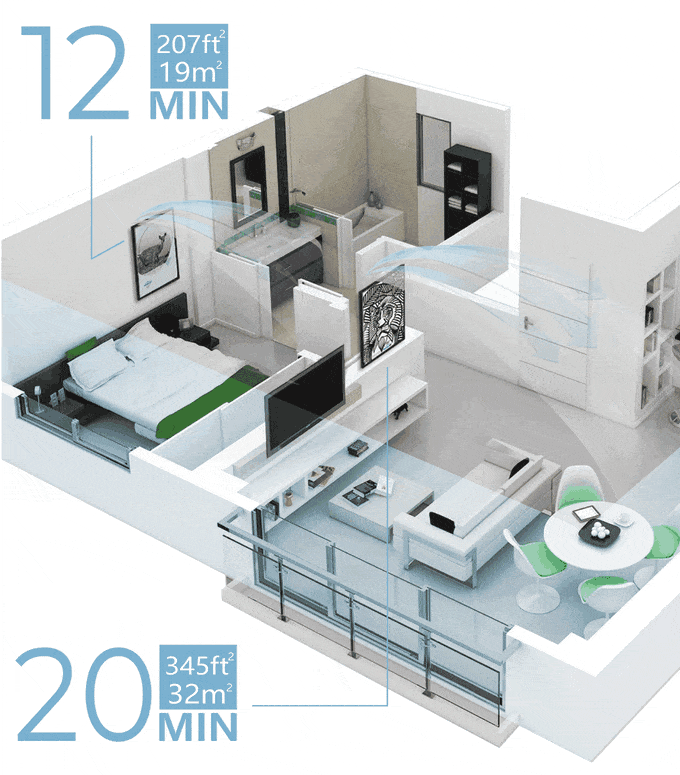
CADR can be used to estimate applicable space.
A higher CADR value indicates a more efficient air purifier with greater purification capacity, suitable for larger spaces. However, it's crucial to consider the units. Do not solely rely on the manufacturer's recommended room size, as there are many misleading advertisements.
The actual indoor area suitable for an air purifier depends on various factors, including the overall environment and the tightness of doors and windows (leakage). Therefore, the standards mentioned above are not fixed values but rather a range. In areas with high air pollution, following the recommended values is advisable. Even air purifiers with the same CADR value can work well in larger spaces if the indoor environment is more favorable, with well-sealed doors and windows that prevent air leakage.
The chart below provides FLAT's recommended usage space for their full range:
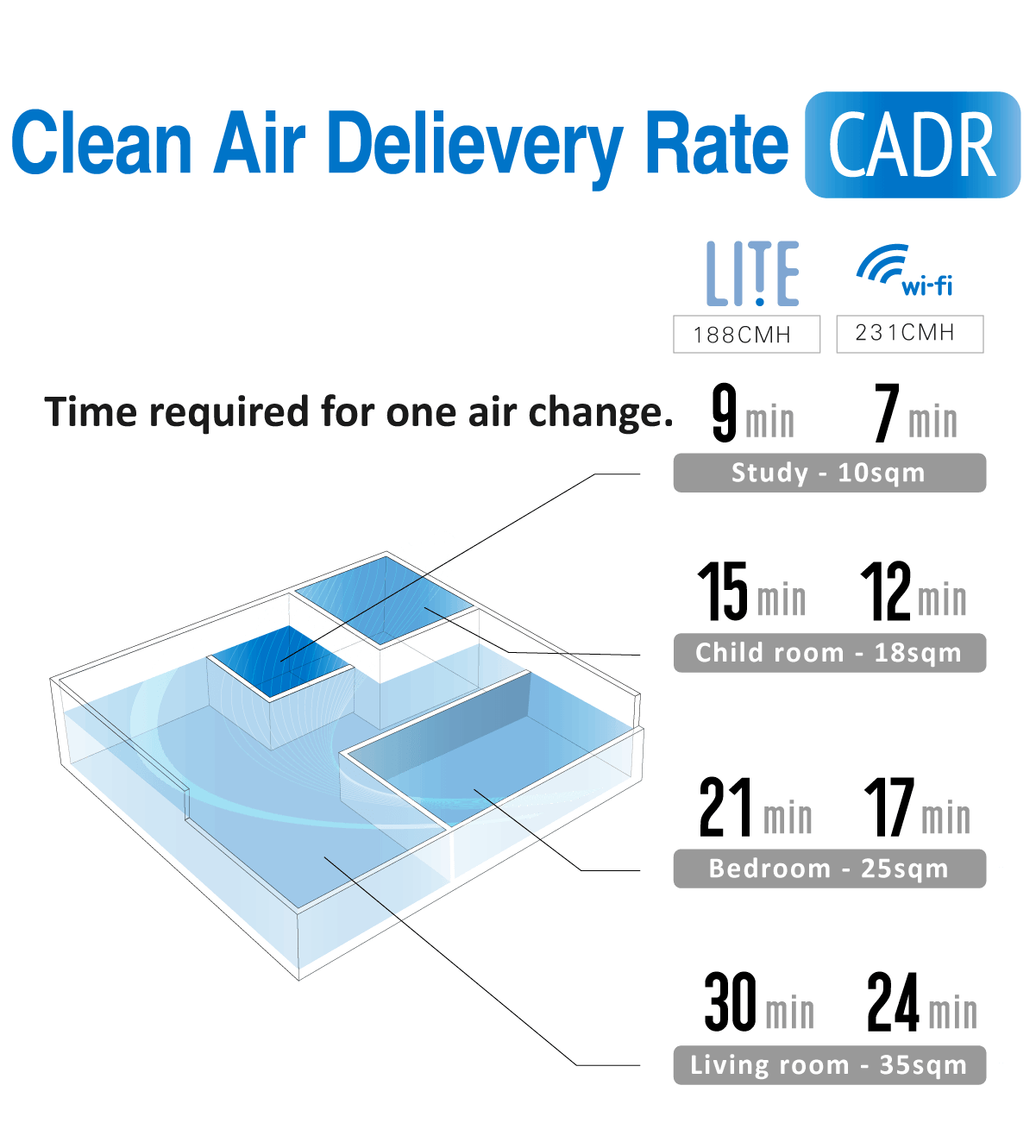
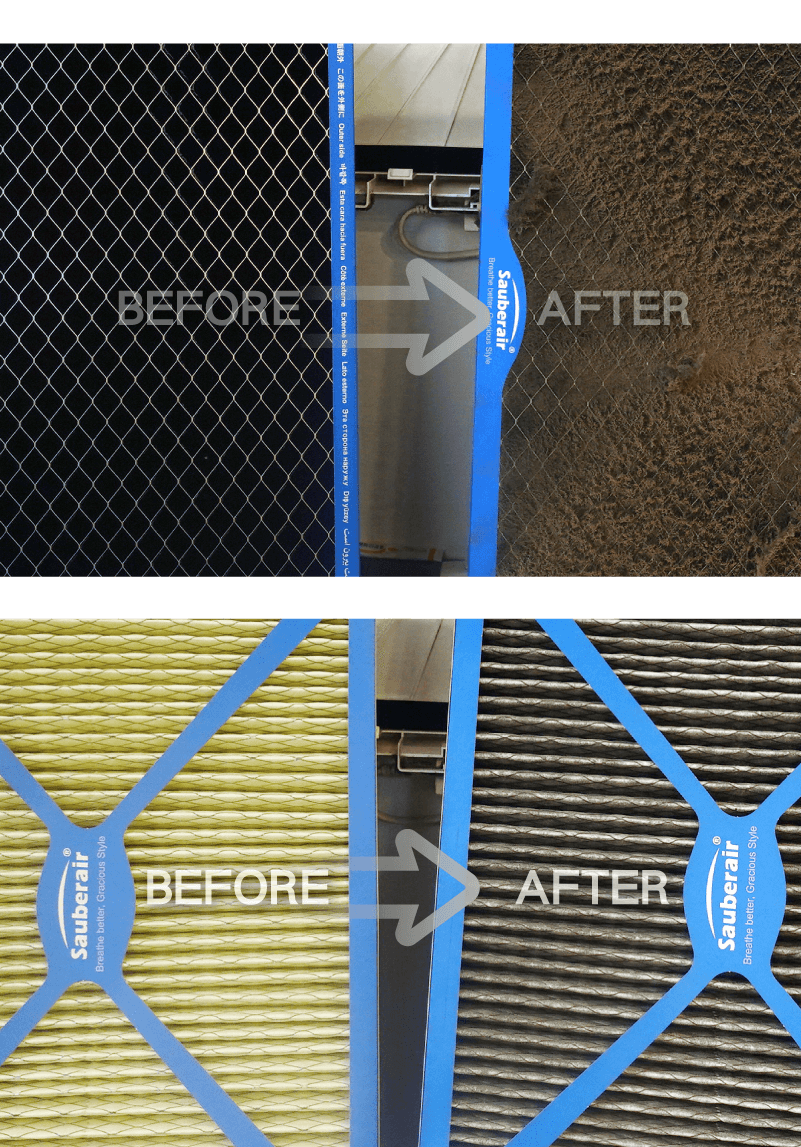
Is CADR the only factor to consider when choosing an air purifier?
Definitely not. CADR value is merely a fundamental guarantee of the overall filtering effectiveness of an air purifier when the filter is new and clean. But how long does the filter last before it clogs and loses its effectiveness?
Sauberair suggests that a good air purifier should strike a balance in the following three aspects to be the best air purifier:
1. Appropriate filter efficiency.
2. Higher ventilation rate.
3. High filter dust capacity (CCM) and reasonable maintenance cost-effectiveness.
Here, 1 and2 represents CADR, while 3 pertains to the filter's susceptibility to clogging, how often it needs replacement, and the cost of replacing a filter.
When purchasing an air purifier, you should consider factors beyond CADR, such as the filter's durability, ease of clogging, filter replacement cost, energy consumption, noise level, aesthetics, and the convenience of using an app. We have compared many commercially available air purifiers and found that the 3-year electricity cost and filter replacement cost of many machines exceed the price of the machine itself. What about filterless models? Besides their poor filtering efficiency, they require frequent cleaning, and their components are prone to failure. Their electricity and repair costs are much higher than filter replacement costs, so consumers must be vigilant.
Sauberair does not solely pursue the one-time filtering efficiency of filters but considers all the factors mentioned above. They have also added many special features to ensure that consumers achieve the best balance and long-term overall benefits, while also considering aesthetics and convenience."
Here is a reference for when to replace the filter: China's national standard for air purifiers, GB/T18801-2015, includes a specification for filter dust-holding capacity (CCM). This means that the clogging of the filter with dirt will lead to a reduction in air circulation, resulting in a decrease in the filtering efficiency (CADR value). When the CADR value drops to half of the new filter, the amount of dust filtered on the filter is called the "CCM dust-holding capacity."
CCM is an indicator of the filter's durability and is as important as CADR value. A higher CCM level indicates that the filter fibers can maintain higher air permeability and better filtering efficiency, lasting longer before needing replacement.
It is recommended to consider replacement when the CADR value drops to 60-70% of its initial value. The highest CCM level is defined up to the highest P4 level with 12,000 mg, and there is still a considerable difference within the P4 level. Some P4 filters get 50% blocked with 12,000 mg, while FLAT's filter still retains 70% air permeability.
FLAT has a CCM of 21,471 mg, which is 1.8 times the highest P4 standard. Assuming an annual dust load of 4,000 mg, it guarantees approximately 91% efficiency after one year, 81% after two years, 72% after three years, and approximately 63% after four years. Its CCM/Price ratio is seven times higher than many popular models on the market. Replacing the filter every 3-5 years keeps FLAT consistently at a high CADR level without any burden.
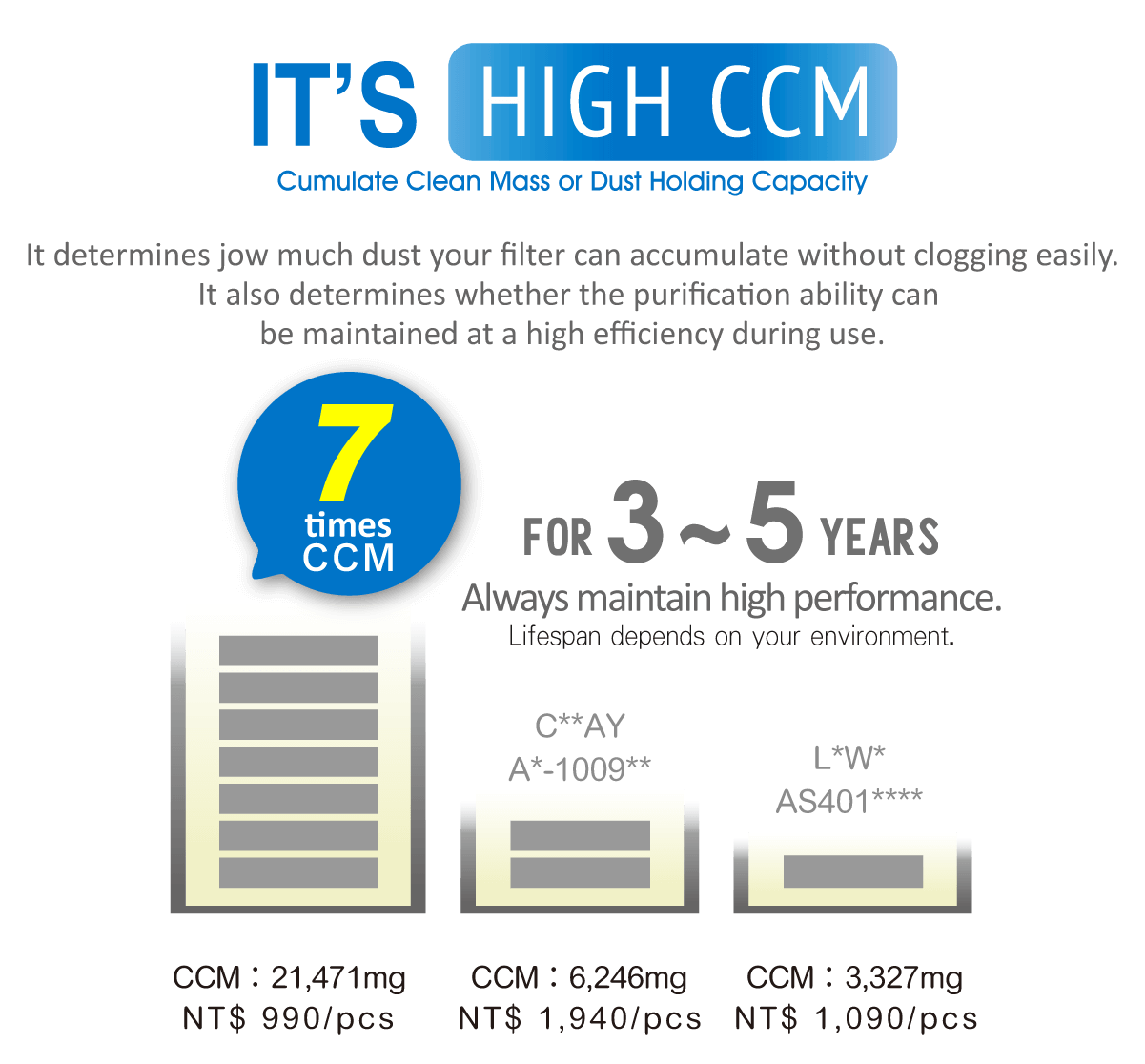
Most air purifiers on the market use a "countdown timer (e.g., a reminder of every 4,000 hours or every six months)" to alert users to change the filter, but this approach is entirely unscientific. FLAT has a unique trick – a world-exclusive innovative airflow decline detection technique "ClogSense™ Technology." It monitors the actual blockage level of the filter every day, accurately informing you of the optimal time to replace it. This way, you won't change a filter that's still clean, preventing unnecessary waste of money, and you won't delay replacement, avoiding any impact on filtration efficiency. Also, if you forget to remove the plastic cover from the filter, clever FLAT will remind you not to forget too!
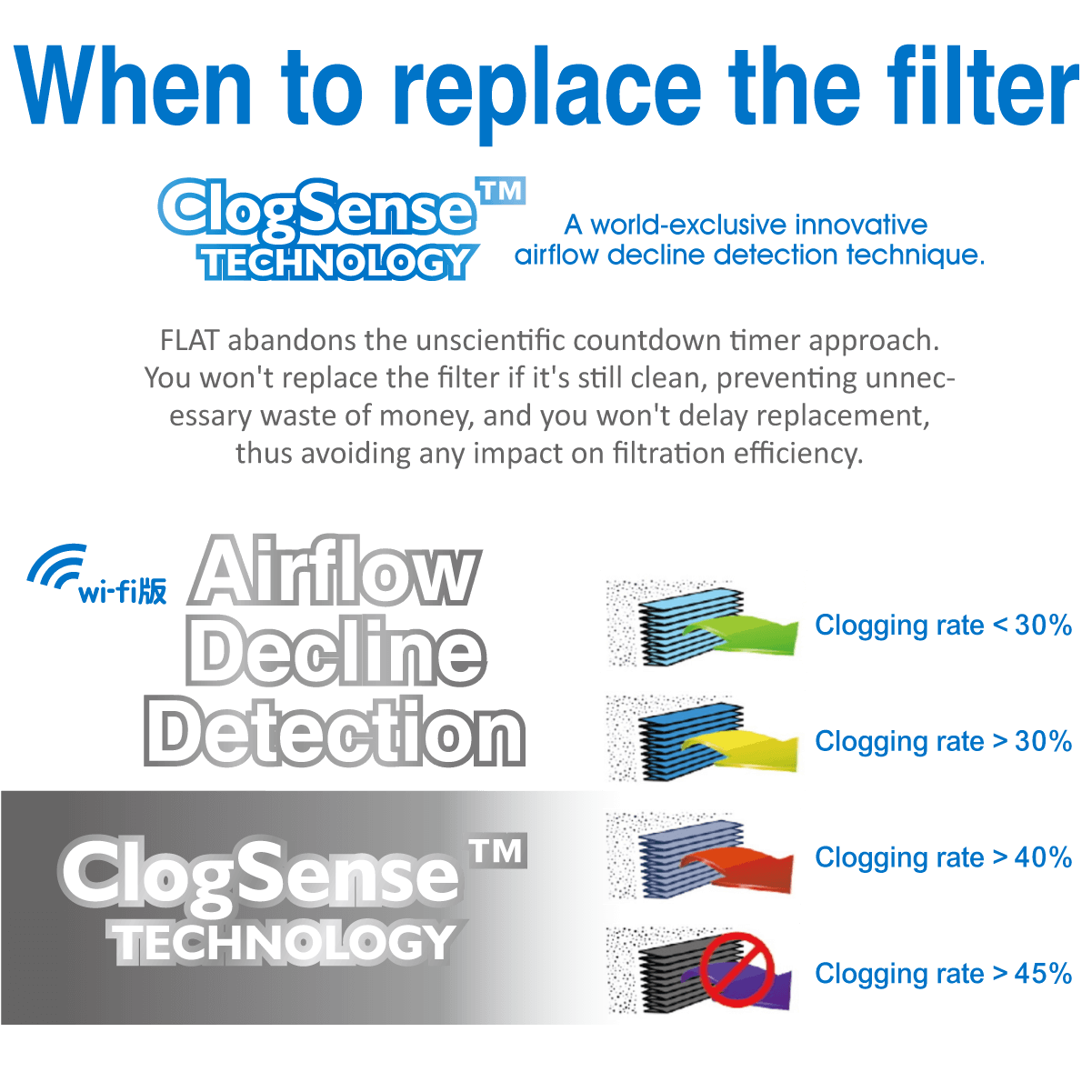
Sauberair does not solely pursue the one-time filtering efficiency of filters but considers all the factors mentioned above. They have also added many special features to ensure that consumers achieve the best balance and long-term overall benefits, while also considering aesthetics and convenience."
How often should the filter be replaced?
There is no standard answer; it entirely depends on whether the filter is clogged.Another critical indicator for air purifiers is CCM.
A study room in Swiss without smoking and a room in Beijing where the windows are never closed cannot be generalized.Here is a reference for when to replace the filter: China's national standard for air purifiers, GB/T18801-2015, includes a specification for filter dust-holding capacity (CCM). This means that the clogging of the filter with dirt will lead to a reduction in air circulation, resulting in a decrease in the filtering efficiency (CADR value). When the CADR value drops to half of the new filter, the amount of dust filtered on the filter is called the "CCM dust-holding capacity."
CCM is an indicator of the filter's durability and is as important as CADR value. A higher CCM level indicates that the filter fibers can maintain higher air permeability and better filtering efficiency, lasting longer before needing replacement.
Higher dust capacity for the same price (CCM/Price) is recommended.
It is recommended to consider replacement when the CADR value drops to 60-70% of its initial value. The highest CCM level is defined up to the highest P4 level with 12,000 mg, and there is still a considerable difference within the P4 level. Some P4 filters get 50% blocked with 12,000 mg, while FLAT's filter still retains 70% air permeability.
FLAT has a CCM of 21,471 mg, which is 1.8 times the highest P4 standard. Assuming an annual dust load of 4,000 mg, it guarantees approximately 91% efficiency after one year, 81% after two years, 72% after three years, and approximately 63% after four years. Its CCM/Price ratio is seven times higher than many popular models on the market. Replacing the filter every 3-5 years keeps FLAT consistently at a high CADR level without any burden.

How do I know when it's time to replace the filter?
Most air purifiers on the market use a "countdown timer (e.g., a reminder of every 4,000 hours or every six months)" to alert users to change the filter, but this approach is entirely unscientific. FLAT has a unique trick – a world-exclusive innovative airflow decline detection technique "ClogSense™ Technology." It monitors the actual blockage level of the filter every day, accurately informing you of the optimal time to replace it. This way, you won't change a filter that's still clean, preventing unnecessary waste of money, and you won't delay replacement, avoiding any impact on filtration efficiency. Also, if you forget to remove the plastic cover from the filter, clever FLAT will remind you not to forget too!

| Recommended |
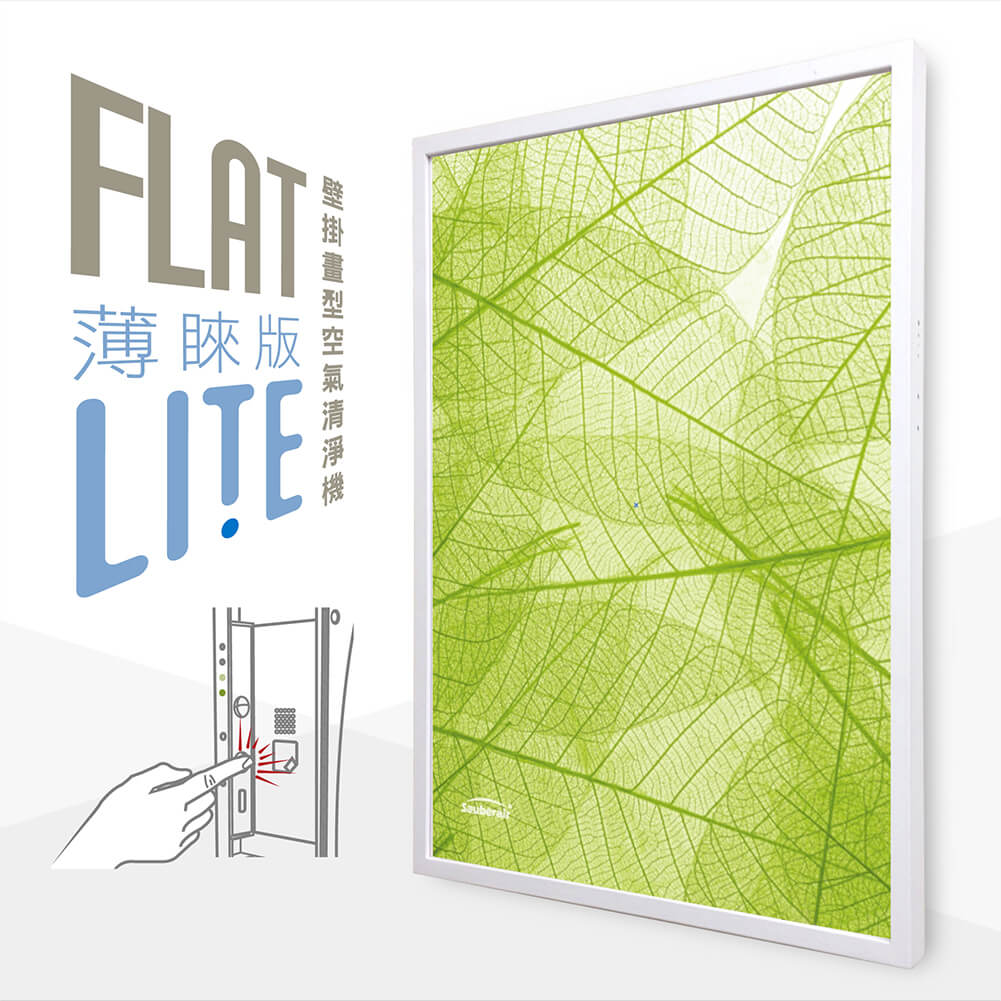
FLAT-LITE Manual Version
Experience the benefit of FLAT in the most economical way!
Smart PackageUS$ 599
On SaleUS$ 499

FLAT™ Wi-Fi / IoT
Perfect blends into your home decor and frees up floor space.
Smart PackageUS$ 850
On SaleUS$ 799

FLAT-BT IoT + Bt Speakers
Let your nose, eyes and ears get the best feeling at the same time.
Smart PackageUS$ 990
On SaleUS$ 899
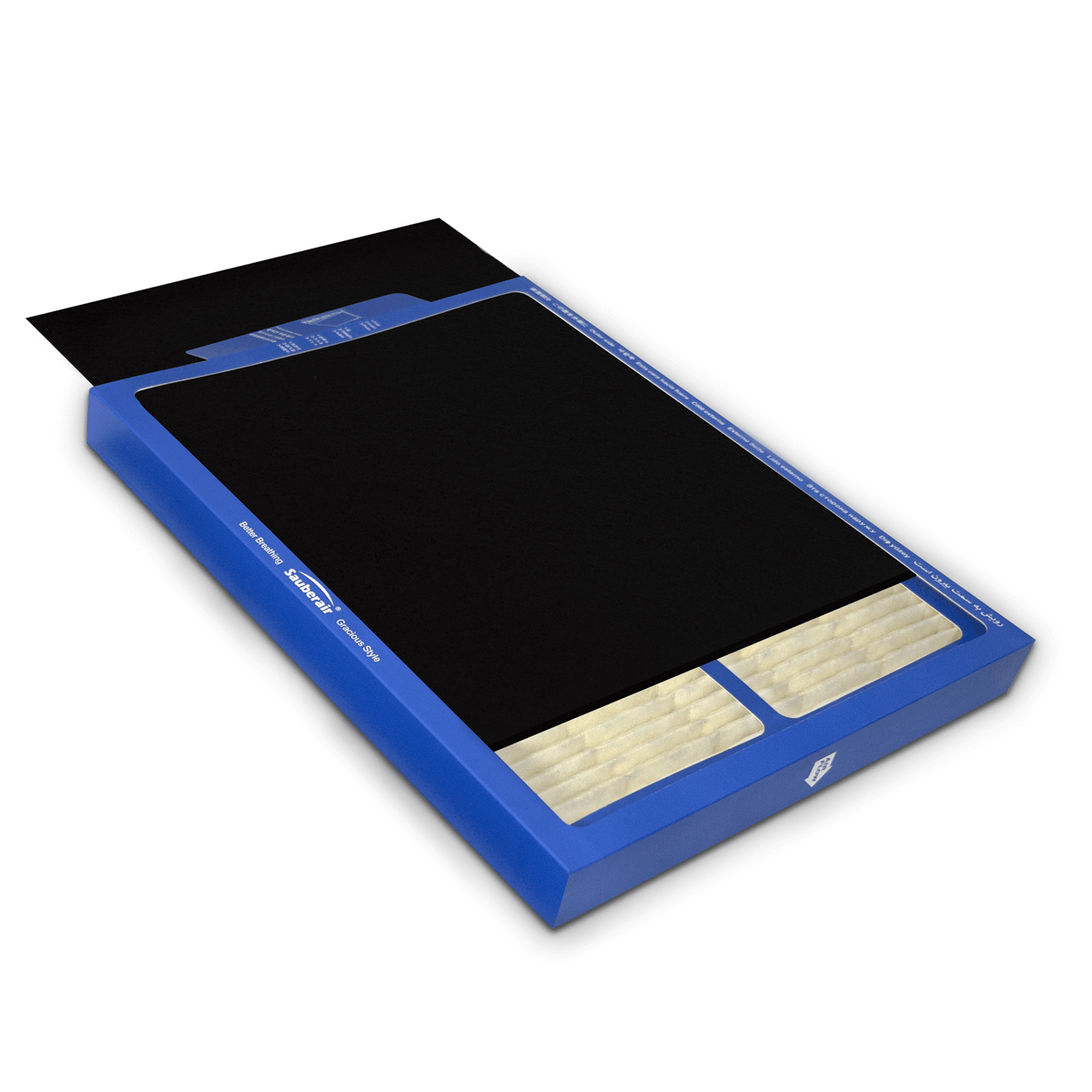
Filter and Activated Carbon
Long lifespan filter and replaceable carbon.
For all seriesUS$ 60
On SaleUS$ 49



